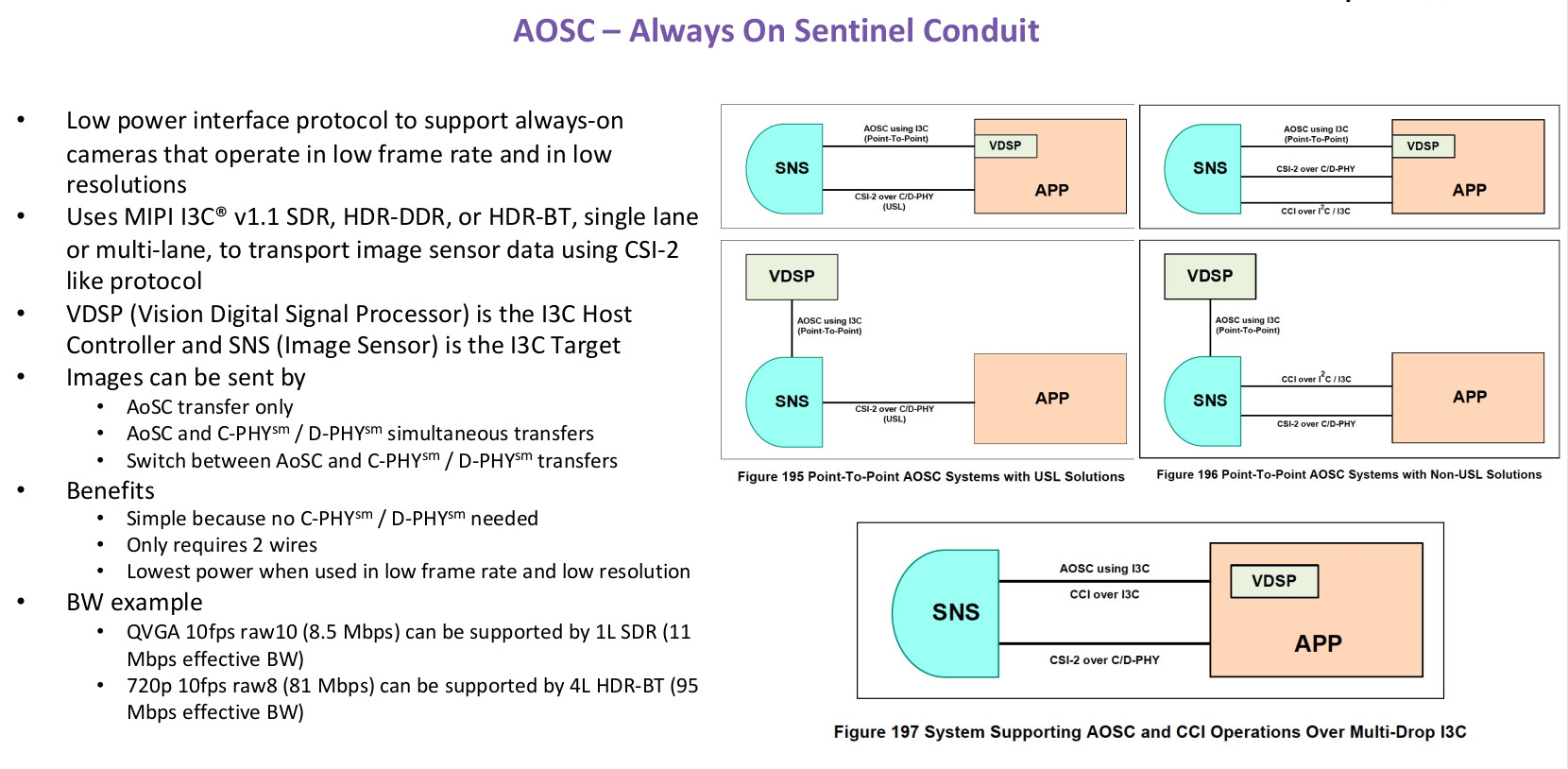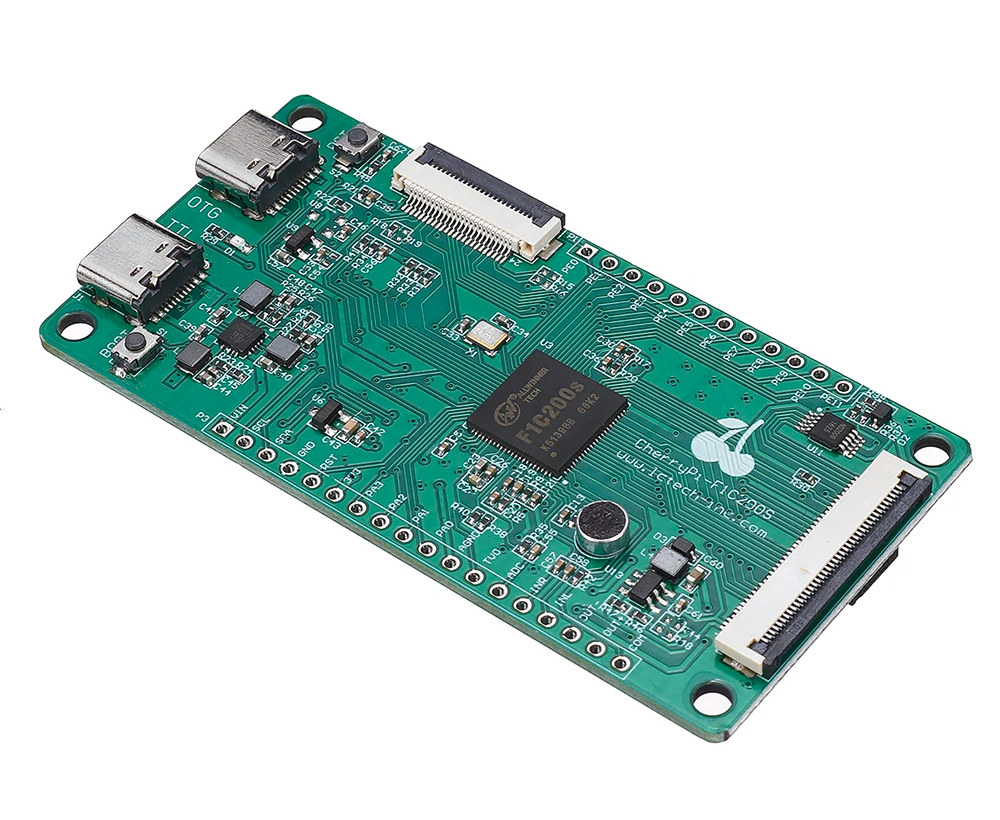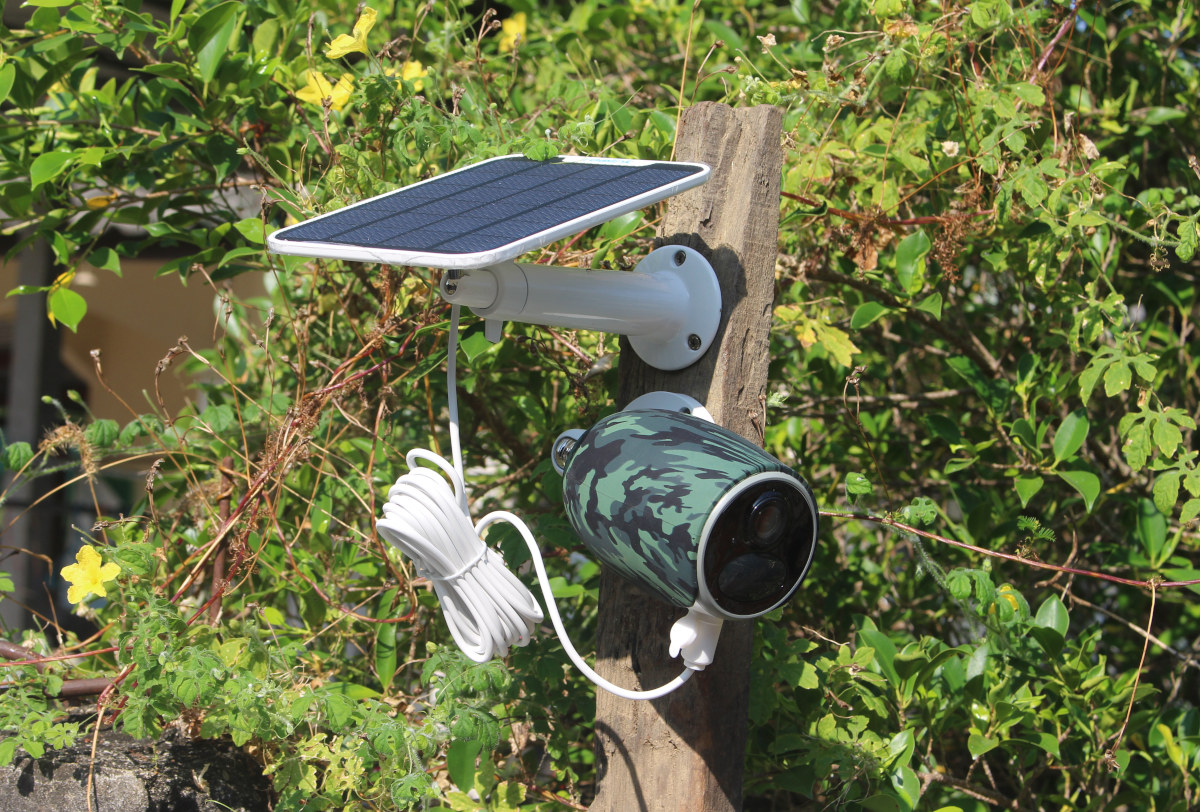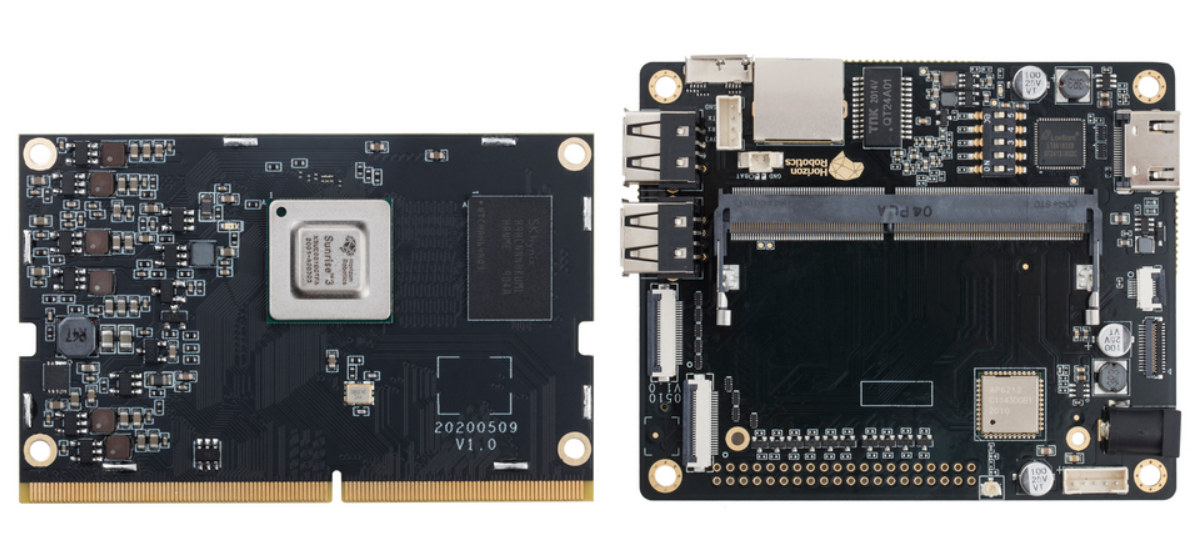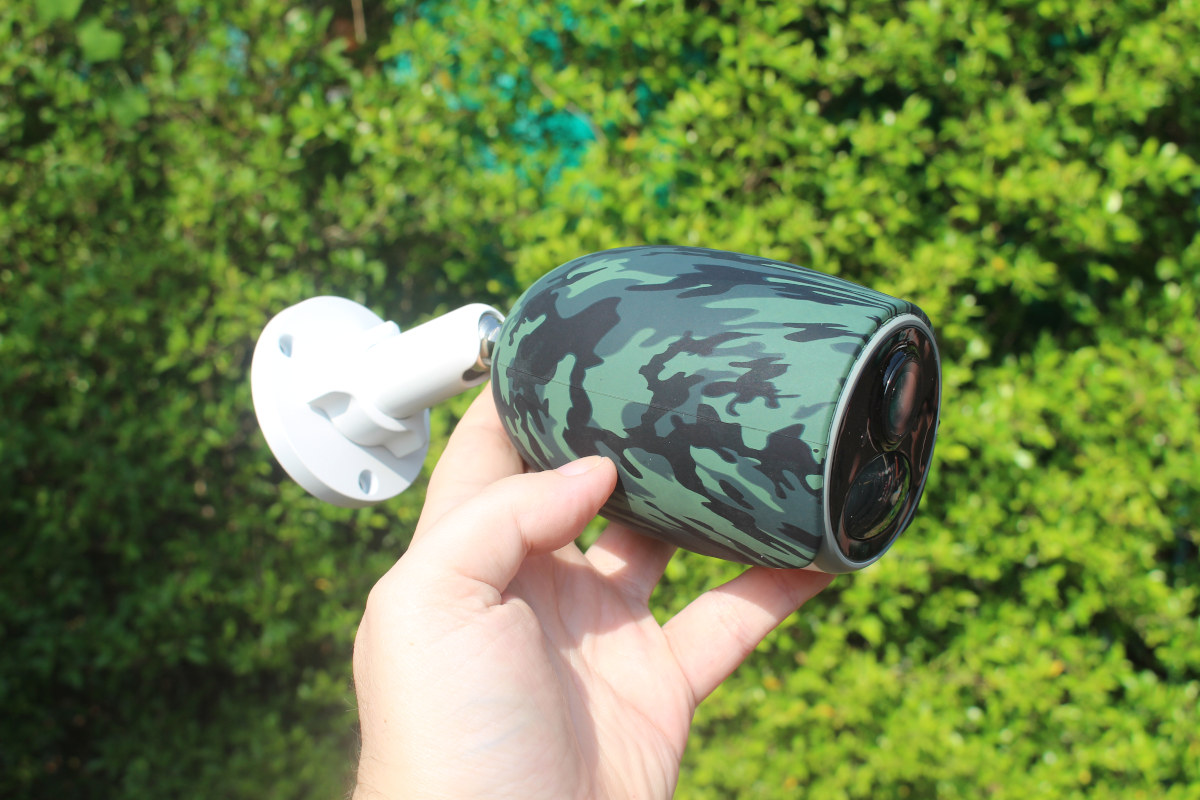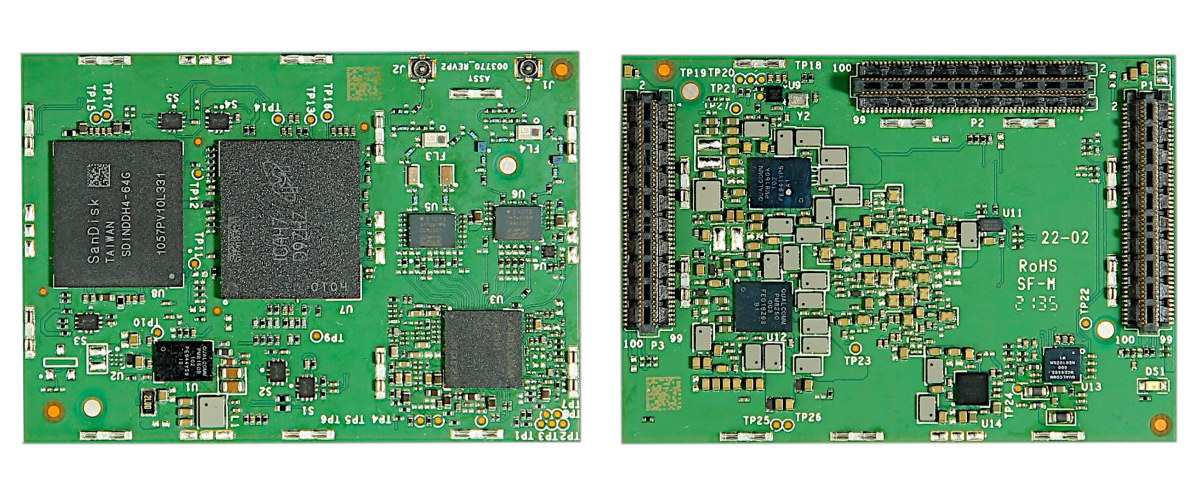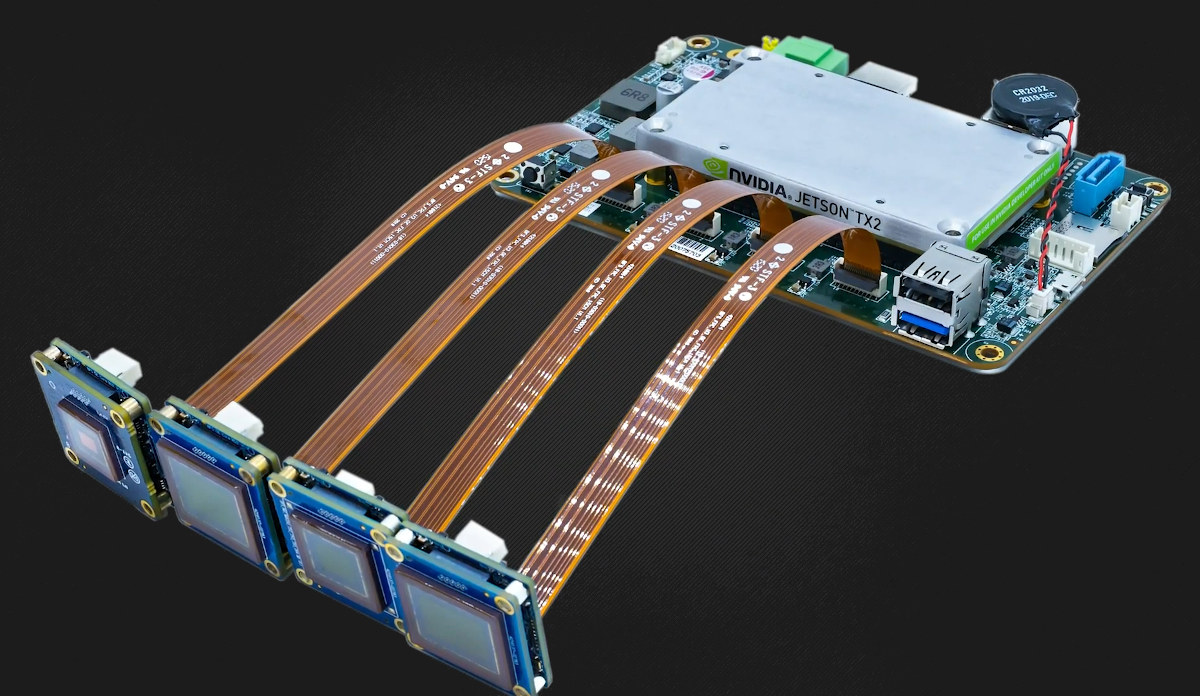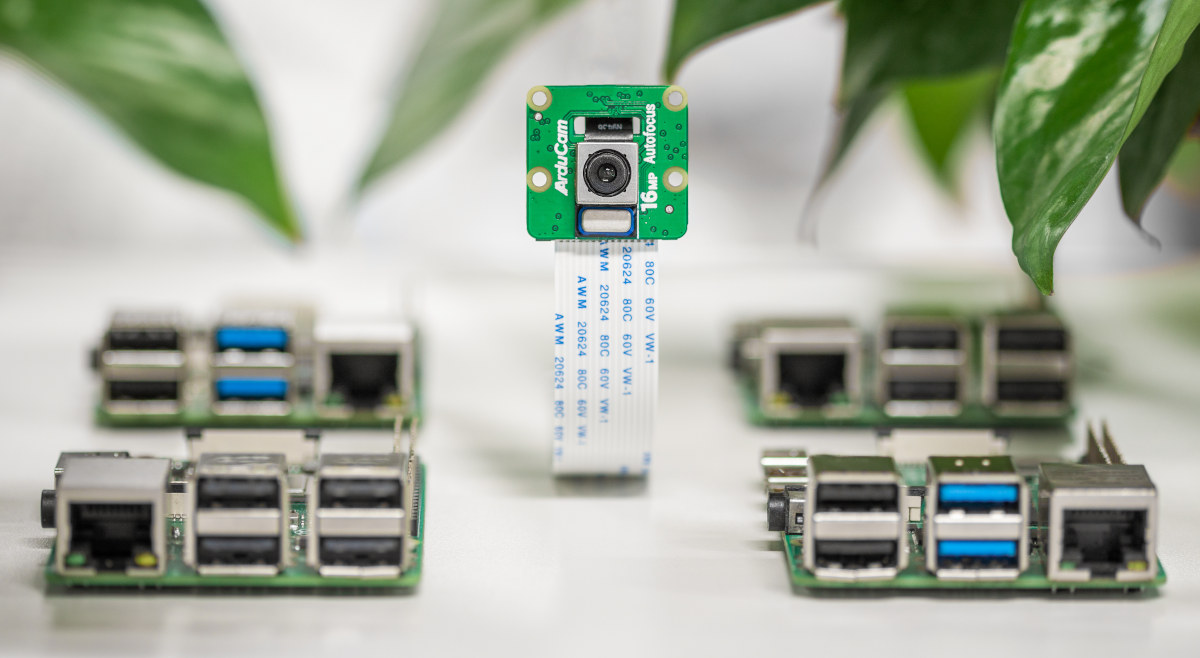While MIPI CSI-2 standard was first introduced in 2005 as a high-speed protocol for the transmission of still and video images from image sensors to application processors, the standard has evolved over the years, and the latest MIPI CSI-2 v4.0 introduces features to better support always-on, low power machine vision applications, high-resolution sensors, and high-dynamic-range automotive image sensors. The main changes for v4.0 include support for a two-wire interface (MIPI I3C) to lower cost and complexity, multi-pixel compression for the latest generation of advanced image sensors, and RAW28 color depth for better image quality and an improved signal-to-noise (SNR) ratio. MIPI CSI-2 v4.0 highlights: Always-On Sentinel Conduit (AOSC) – Enables always-on machine vision systems with ultra-low-power image sensors and video signal processors (VSPs) continuously monitoring their surrounding environments and having the ability to wake up their more powerful host CPUs when specific events happen. Some use cases include laptop/tablet-based face […]
More Allwinner F1C200s ARM9 boards: MangoPi R3 and CherryPi-F1C200S
I wrote about the Widora TINY200 board based on Allwinner F1C200s ARM9 processor with 64MB built-in RAM, up to 512MB NAND flash, LCD and camera interfaces in April 2020. I was just informed more similar Allwinner F1C200s boards had recently shown up with Widora MangoPi R3 that’s basically the same as TINY200, and CherryPi-F1C200S with similar dimensions and features, but a different ports arrangement. Let’s have a look at both. MangoPi R3 MangoPi R3 specifications are the same as the ones for Tiny200 board, but they selected the 128MB NAND flash storage option, and changed the USB-TTL chip: SoC – Allwinner F1C200s ARM926EJS processor @ 420 MHz (overclockable to 700 MHz) with 64MB DDR RAM Storage – 128MB NAND flash and MicroSD card slot Display I/F – 40-pin RGB565 display interface and 6-wire touch interface Camera I/F – 24-pin DVP camera interface compatible with OV2640, GC0328, etc. Audio – Onboard […]
Reolink Go Plus 4G review – Part 2: A Solar-powered 4G LTE security camera with person & vehicle detection
Last month, I received Reolink Go Plus 4G smart security camera with 4G LTE connectivity, vehicle/human detection support, and powered by a solar panel. In the first part of the review, I did an unboxing, added the camera to the Reolink Android app, and confirmed it worked with my DTAC SIM card. I’ve now installed the camera and had time to test more of its features, so I can report my experience with the security camera. Reolink Go Plus 4G camera and solar panel installation I wanted to use the camera near the gate that’s outside of (reliable) WiFi range. So I found a piece of hardwood to which I attached the mounts of the camera and solar panel… … and attached it to the wall. My current installation works for testing, but it’s not the most secure as the camera is quite visible and only placed a little over […]
Horizon X3 AI development board is powered by Sunrise 3 AI Edge Arm processor
Horizon X3 AI development board is powered by Horizon Robotics Sunrise 3 (aka X3) quad-core Cortex-A53 processor with a 5 TOPS NPU, and multiple camera support with the chip apparently designed for the automotive industry. [Update January 25, 2022: A third-party company, Finsbury Glover Hering, claiming to represent Horizon Robotics informed CNX Software the chip is not designed for the automotive market, and that Horizon’s AIoT business is actually limited to the domestic China market and not overseas.] The devkit is comprised of a Sunrise 3 system-on-module with 1GB LPDDR4 & 16GB EMMC memory, as well as a baseboard with Gigabit Ethernet and WiFi, HDMI up to 1080p60 and MIPI DSI interface, a camera interface, and a 40-pin header for expansion. Horizon X3 AI development board specifications: SoC – Horizon Robotics Sunrise 3 quad-core Cortex-A53 processor @ 1.2 GHz, one Cortex-R5 core, a 5 TOPS NPU (2x “Bernoulli” BPU) System […]
Reolink Go Plus 4G smart security camera with solar panel – Unboxing and first setup
I’ve received several Reolink IP cameras either connected over WiFi or Ethernet, but the company has just sent me Reolink Go Plus 4G security camera together with a solar panel that would let me access the camera from anywhere with cellular network connectivity. Reolink Go Plus integrates a 4MP camera and supports person and vehicle detection, just like Reolink RLC-810A model I reviewed earlier this year. I have three Reolink cameras, and I’m somewhat satisfied except that the connection to WiFi cameras is often unreliable, and I have to rely on Cloud backup to play video captures most of the time. The Ethernet-connected Reolink RLC-810A has a much more reliable connection. So I’ll have to see if the Reolink Go Plus camera is more accessible over 4G LTE than WiFi cameras. I’ll start the review by checking out the packages and going through the initial setup for the Reolink Go […]
Inforce 68A1 SoM supports up to seven 4Kp120 cameras, dual 4Kp120 video encoding/decoding
SMART Wireless Computing has announced the Inforce 68A1, a compact system-on-module based on Qualcomm QCS8250 IoT processor with support for up to seven concurrent 4Kp120 camera inputs, and decode/encode two 4Kp120 video streams simultaneously. Equipped with 8GB PoP DDR5 memory, 64GB UFS storage, a wireless module supporting 802.11ax Wi-Fi 6E and Bluetooth 5.1, the module is designed for high-end IoT applications such as smart cameras, video collaboration, AI hubs, connected healthcare, and smart retail. Inforce 68A1 specifications: SoC – Qualcomm QCS8250 octa-core Kryo 585 processor up to 2.84 GHz (high-performance cores) or 1.8 GHz (low power cores) with Adreno 650 GPU, Adreno 665 VPU, Adreno 995 DPU, Hexagon DSP with quad HVX, NPU230 neural processing unit, Spectra 480 ISP; 15 TOPS AI processing power System Memory – 8GB LPDDR5 (PoP) Storage – 64GB UFS flash Wireless – Qualcomm QCA6391 with 802.11 a/b/g/n/ac/ax Wi-Fi 6 2×2 MIMO, Bluetooth 5.1 Audio – […]
Teledyne FLIR Quartet Jetson TX2 carrier board supports up to four USB 3.0 cameras
There are already plenty of NVIDIA Jetson-based camera solutions from carrier boards to IP67 rugged cameras, but Teledyne FLIR has decided to launch its own with the Quartet carrier board for the Jetson TX2 module. The Quarter board is not designed to work with the thermal cameras the company is known for, but instead FLIR Blackfly S USB3 cameras designed for machine vision. Besides four TF38 USB 3.0 connectors, the carrier board also offers a SATA storage interface, HDMI video output, and extra USB Type-A ports for other peripherals. Teledyne FLIR Quartet (P/N ACC-01-6003) specifications: Supported SoMs – NVIDIA Jetson TX2, Jetson TX2i module Storage – SATA III connector, MicroSD card slot Video Output – 1x HDMI Type-A port up to 4Kp60 Camera Inputs – 4x USB 3.0 TF38 ports Other USB ports – 1x USB 3.0 Type-A port, 1x USB 2.0 Type-A port, 1x micro USB OTG port Misc […]
A $25 16MP camera with autofocus for Raspberry Pi boards (Crowdfunding)
ArduCam has launched a $25 16MP camera with autofocus for Raspberry Pi boards with 40% higher resolution than the 12MP Raspberry Pi HQ camera, while keeping the compact form factor of the 8MP Raspberry Pi Camera V2. The camera is equipped with a 16MP Sony IMX519 sensor, works with any Raspberry Pi board with a MIPI CSI interface, and the company claims that with the existing camera tuning algorithms from the Raspberry Pi Foundation, the camera module beats the Raspberry Pi HQ camera’s quality in every aspect including sharpness, saturation, exposure, and more. The downside is that it lacks supports for interchangeable lenses. Arducam 16MP camera specifications: Sensor – Sony IMX519 sensor with 4656 x 3496 pixels resolution Still resolution – 16MP Video modes – 1080p30, 720p60 Optical size – Type 1/2.53″ Focal ratio – 1.75 Focal length – 4.28 mm Autofocus – Yes with range 10cm to ∞. As […]


